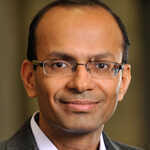
India’s Digital Health ECG: Clutching onto silver linings of Covid-19


Health, digital health in particular, has been on top of everyone’s minds as globally, healthcare startups closed a record-breaking 1,904 deals in 2021. India’s digital health ECG showed a 41% increase in funding year-on-year. The COVID-19 outbreak not only brought economies to a standstill, but also brought to light inadequacies in health systems, thereby energizing interest in technologies that could accelerate patient outcomes where physical initiatives alone would not suffice.
The so-called ‘pulse’ of the ‘Digital Health ECG’ has dramatically picked up since 2019 across key areas like AI, telehealth, medical devices, mental health, digital therapeutics, -Omics and health IT, with funding surpassing the 2020 total by 27% as per CBInsights data.
Turning the lens to India, the digital healthcare market is expected to reach $5 billion by 2023, growing at a CAGR of 39%. Investment in the Indian health tech sector has demonstrated significant momentum -- from 2015 to 2018, private investment and key funding in digital health has grown.

Cueing Beeps – Yesterday’s Patient Journey is Full of Friction
Let’s take the case of Rohit (name changed to protect identity), who suffers from pulmonary disorder in a rural town in India. Rohit would have to go through at least six separate touchpoints to initiate the first cycle of his care journey. He would access his general physician through insurance-provided networks. He would then undergo tests at a lab, bring these physical reports back to the doctor for a follow-up consultation, and then collect medication from his local pharmacy. Alas, out of stock: Rohit is forced to travel to multiple pharmacies to fulfill his prescription. A few months later, his health condition has worsened, with lung capacity scores in the red and he is forced to rush to a bigger city for specialist care as physical access to a doctor is the only available method for acute treatment. The patient journey is clearly broken and fragmented; for a patient in critical need and their caregivers, this experience is disconnected, complex, impersonal, and potentially harrowing.
Attaching Electrodes – Today’s Journey Streamlines and Delivers Connected Care

However, in today’s digitally-enabled journey, six entirely geographically unconnected touchpoints have now converged into a minimal number of flows within an application on a phone. For many like Rohit, data accessibility and increased smartphone affordability has been instrumental in eroding the mental block against digital tools. Overall, the adoption of telemedicine in India has risen, demonstrating a 35% increase in monthly active users from 2019 to 2020 and 17% from 2020 to 2021 for some dominant connected care applications. Thanks to this, sitting in a rural town, Rohit virtually consults with a Tier 1 pulmonologist across the country. Within minutes from his home, he has recorded his symptoms on a chatbot, logged his vitals and comorbidities for review by an assistant doctor, uploaded his past health records and incident history, and begun the video consult with his doctor. During the call, his doctor has noted prior case history and begins to prescribe medications. His doctor then refers him to additional members of his global digital care team. They create a closely integrated care plan tied to his insurance to help him finance his treatment. For many, this was previously not possible without extensive means and an adequate insurance network.
Monitoring Rhythms – Tomorrow’s Journey Promises a Personalized Experience
Forced to adapt to the exigencies of a remote, contact-less world, digital health has helped smoothen out inefficient practices within traditional care delivery. In many cases, faced with physician shortages, physical restrictions, and the rising prevalence of expensive chronic conditions, technology became a pre-requisite for care access. With the increasing availability and affordability of wearable device data, startups can begin to cover almost a 360 degree view through Digital Twin technology. Going forward, the future of the patient journey needs to drive towards hyper-individualized long-term care and intelligent disease management across a growing number of therapy areas. The industry – large corporates and startups alike - needs to continue to innovate quickly, emphasize ease of use, price transparency, along with regionalized and personalized offerings to sharpen and democratize care access across India. At the thought of the art of the possible, the pulse quickens.


Rajiv Gupta
Rajiv Gupta is Managing Director and Senior Partner at Boston Consulting Group. Sudhanshu Chawla, Partner & Harsh Singh, Project Leader at BCG, contributed to the piece.
